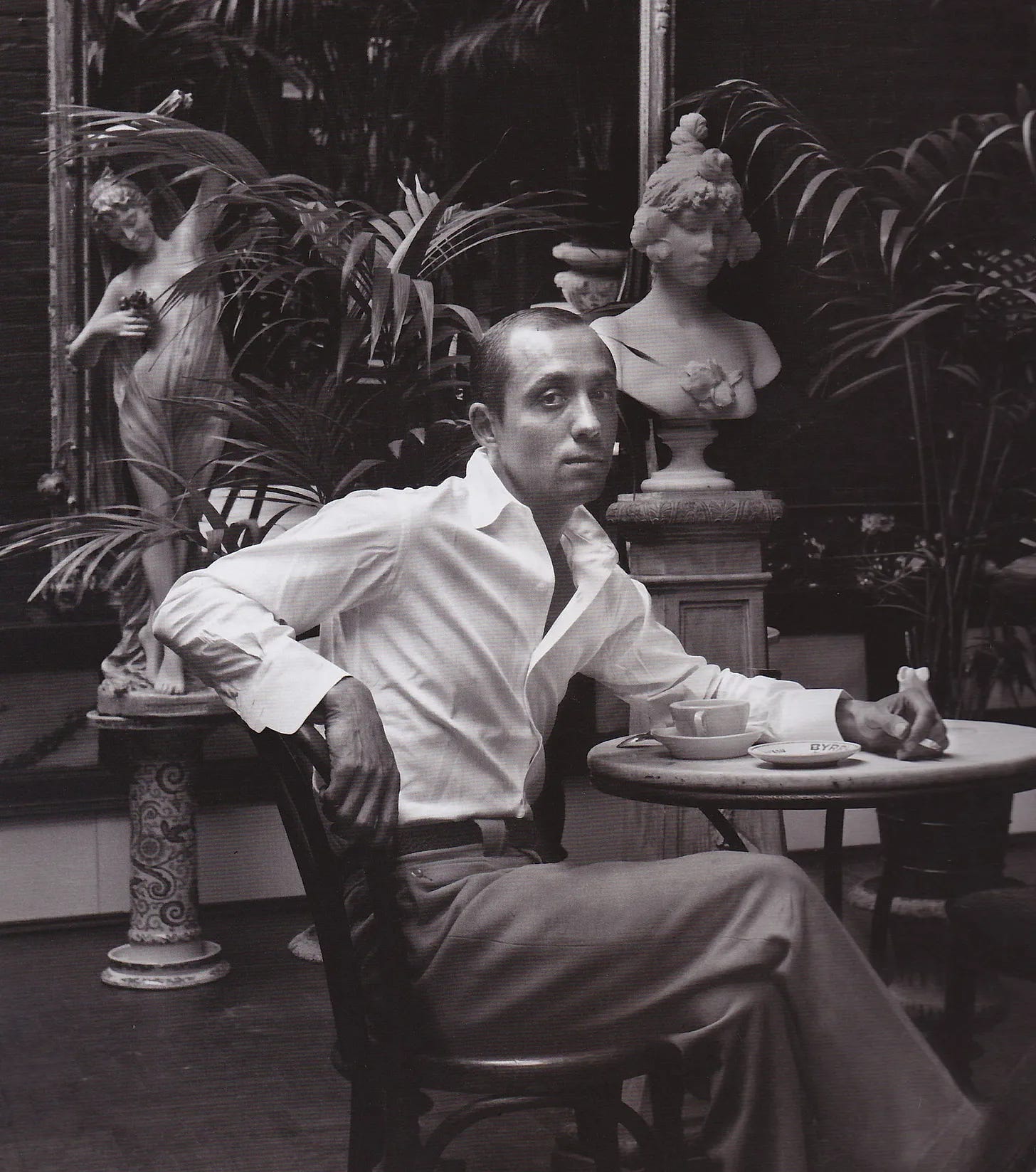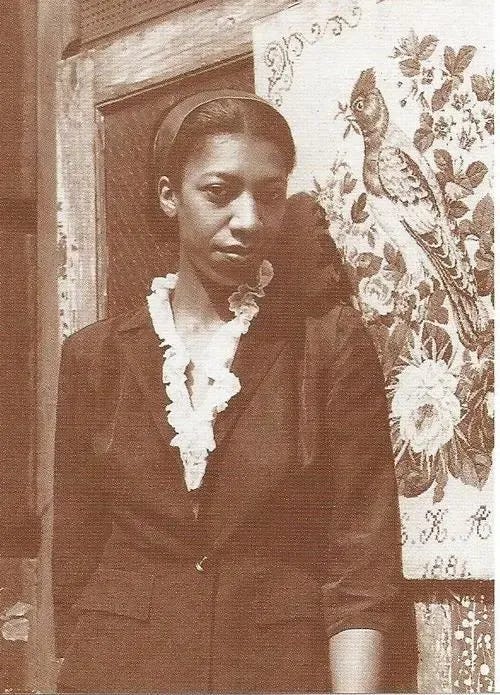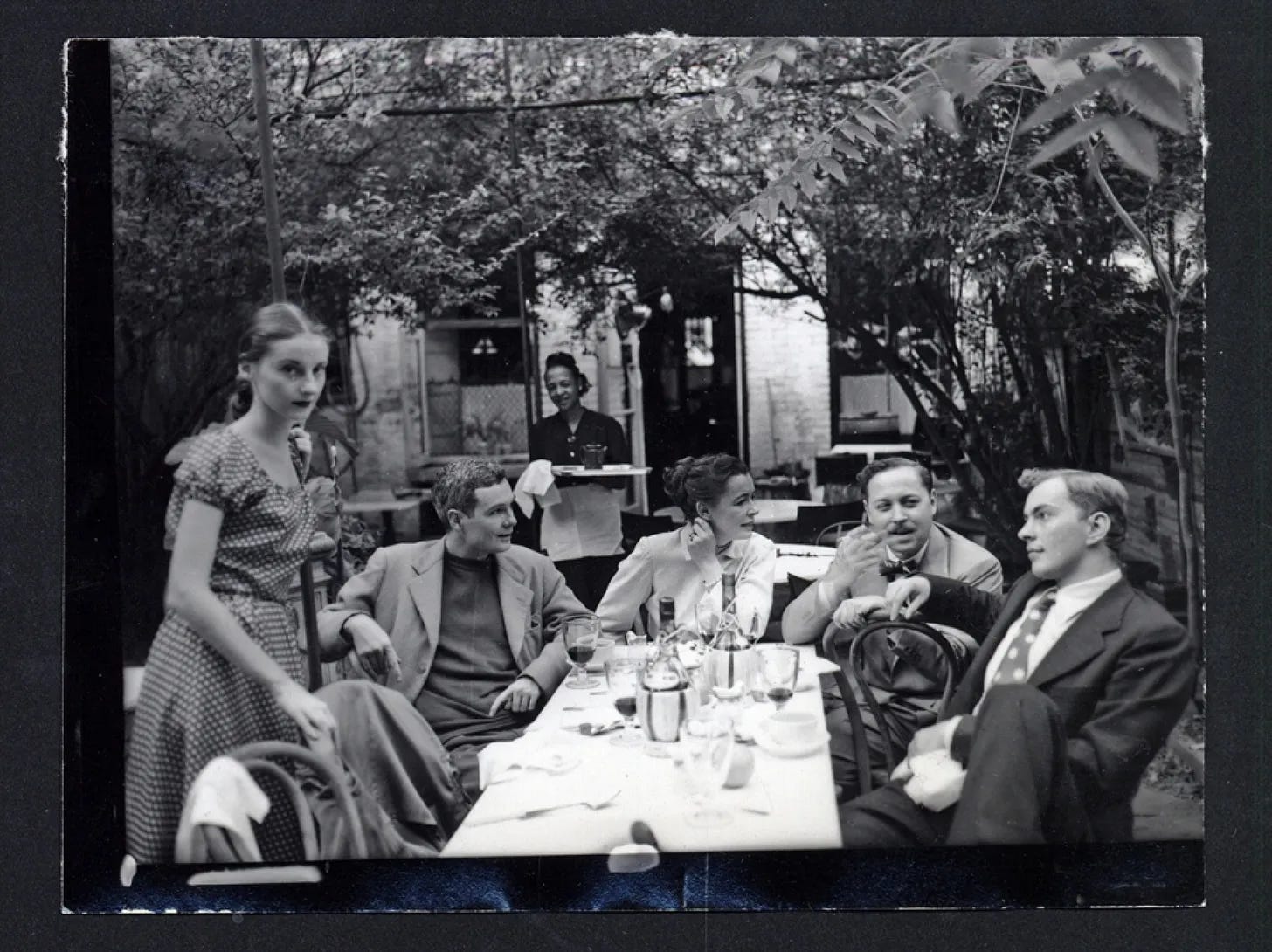A Fashionable Visit to Café Nicholson
How a restaurant became the hottest fashion shoot location in mid-century New York
Lots and lots of fashion images below so this newsletter will likely not fully load in your email—read it in your browser or the Substack app to see everything.
If I were able to go back in time to eat at one restaurant, I would likely choose Café Nicholson. Opened by Johnny Nicholson (born John Bulica, son of an Albanian-immigrant restauranteur in St. Louis) at 212 East 58th Street, near Third Avenue, Café Nicholson was the center of café society in Manhattan at midcentury—renowned for its old-world elegance, its innovative food, and bohemian crowd, the restaurant was also the setting for decades of editorial and advertising shoots.

Having arrived in NYC several years prior after being declared exempt from the draft, Johnny got a job assisting on the windows at Lord & Taylor. There he met Karl Bissinger, a young student at the Art Students League; they soon became lovers and moved in together. Their second apartment was a large street-level commercial space on East 58th Street. Nicholson, a born scavenger, quickly filled the space with antiques and architectural salvage—the unwanted detritus of a modernizing city—which the couple began renting out for photoshoots once Bissinger joined Vogue’s prop department. Together they spent six months traveling around Europe in 1948, with Johnny becoming particularly taken by the European bohemian predilection for restoring and working with the ancient, so unlike the American desire to bulldoze and start anew. While in Rome, he fell in love with the look and feel of Caffè Greco, a still-original café first opened in 1760 that acted as a center for intellectual and artistic life for centuries (it is still open to this day). The same year Nicholson and Bissinger made their pilgrimage there, Irving Penn photographed a group of Italian intellectuals in that same painting-and-statue laden space.

"When we came back in 1948, New York was the dreariest place you can imagine," Johnny told an interviewer decades later, "And the city was worn out. After six months in Europe, I really didn't want to come back. I was very, very unhappy about [not being able to sit] in a café very leisurely. So that gave me the inspiration to open Café Nicholson." After finding a cheap storefront near their prop shop-cum-antiques store, he set to work reconstructing an indeterminate past in Midtown Manhattan using his salvage materials. In 1951, food writer Clementine Paddleford described entering the restaurant, “OPEN THE DOOR - The entrance is a strip of hallway, the walls of Gothic paneling. Look through the cut-out spaces to your left, a peep show into Edna Lewis' kitchen, to the right the service pantry. Ten steps along here's the dining room.” Pride of place went to the “old time soda fountain and candy store picked up on Canal Street, the place dating back to 1854,” which took up one whole side and was heavily laden with baskets and towers of eggs, cheese, and fruit. Opposite was a large gilt mirror that reflected the goodies on the bar and the eclectic assemblage of antique elements: Spanish tiles on the walls, bentwood chairs at little milk glass-topped tables, a stained-glass window wall, a fountain engulfed in a jungle of palms, and a preponderance of marble and ceramic statues. A little garden in the back was open to the sky above—no awning to cover from inclement weather—with a large Tree of Heaven and a certain relaxed wildness.
A friend from his and Bissinger’s bohemian artist circles—a Black Virginian named Edna Lewis, who was working on Bonwit Teller’s windows and as a seamstress at the time—offered to cook. Having learned to cook as a child in Freetown, the community for the formerly enslaved where she grew up, Café Nicholson was Lewis’ first time working as a professional chef. She devised an unchanging offering of dishes (no menu): a choice of three appetizers, changing with the season but always the same onion soup; a selection from a few mains—filet mignon with Bearnaise sauce, a soon-to-be-famed roast chicken, a cheese soufflé, and once a week a “Malaya curry with the kitchen’s own chutney,” made by Edna’s husband, Steve Lewis, a former merchant seaman who had been stationed in the Far East; no vegetables, just a salad with garlic dressing; crusty Italian bread with sweet butter; and a choice of three desserts, including a chocolate souffle so beloved that fans still talk about it to this day. All for $3.50 a meal (around $47 today).

The romantically decorated café was soon the gathering place for the same kind of artistic and intellectual crowd that frequented its inspiration, Caffè Greco; bringing together Bissinger and Nicholson’s bohemian artistic and fashion worlds, and welcoming New York’s literary and theatre circles. For Flair magazine, Bissinger photographed ballerina Tanaquil Le Clercq, novelist Donald Windham, painter Buffie Johnson, playwright Tennessee Williams, and writer-provocateur Gore Vidal in Café Nicholson’s garden; though the restaurant wasn’t mentioned in the magazine’s caption, that famous photograph—entitled “Salad Days”—aided in Café Nicholson’s growing legend. Fifty years later, Vidal wrote of this image, “For me, Karl Bissinger's picture is literally historic, so evocative of a golden moment when we were neither at war—our usual condition, it now appears—nor in a depression. Look at the civilization we could have created!”

Not everyone loved Nicholson’s taste; his New York Times obituary described it as “decorated… in a spirit of mad eclecticism, combining trash-bin chic with florid romanticism, a look he once described as ‘fin de siècle Caribbean of Cuba style,’” while in 1963, Craig Claiborne called the “décor… as contrived as a Victorian stage set.” James Beard, in a 1954 round-up of the best restaurants in New York, described it as “decorated with turn-of-the-century elegance—a little reminiscent of old New Orleans, a little like a stage setting.” It’s hard to imagine a better place to serve as the backdrop for fashion editorials and advertisements; with Bissinger and Nicholson’s history in prop rentals, Café Nicholson was soon the fashion location du jour.
Keep reading with a 7-day free trial
Subscribe to Sighs & Whispers to keep reading this post and get 7 days of free access to the full post archives.


